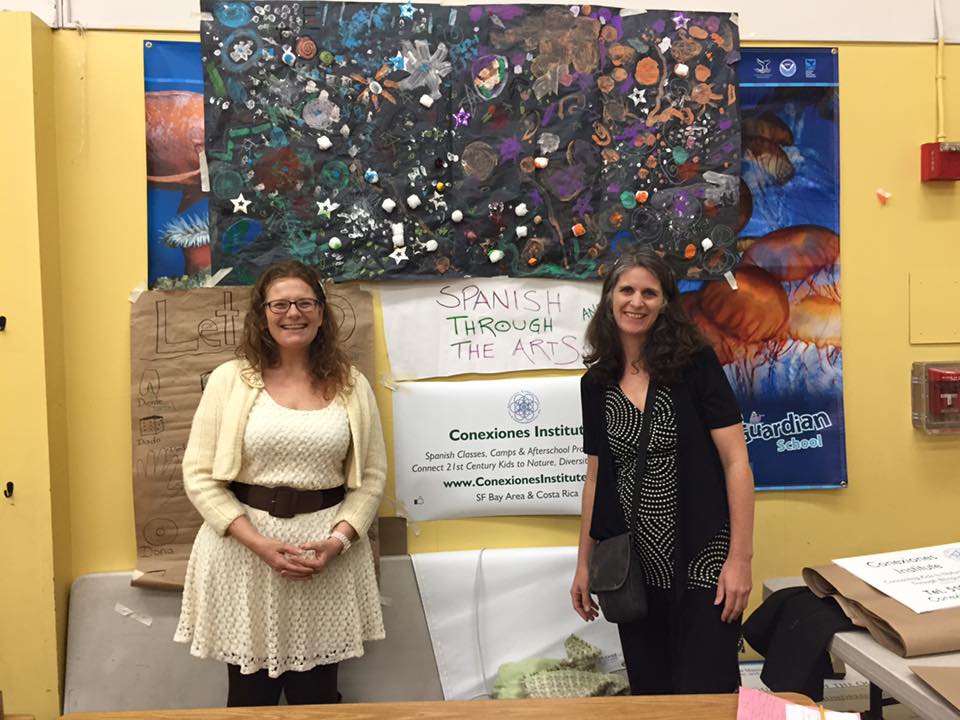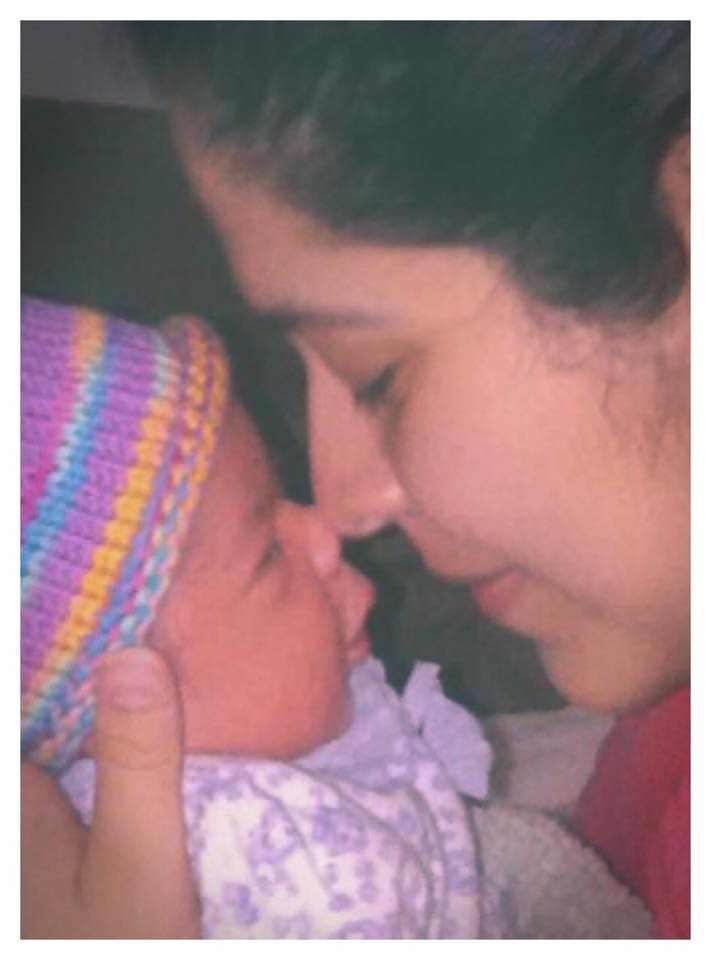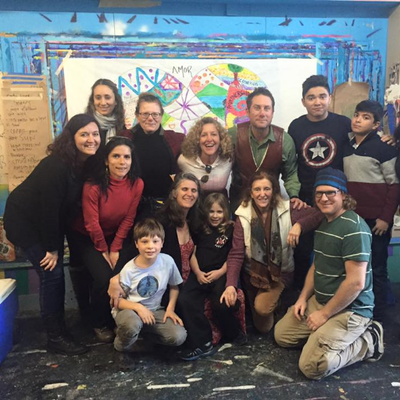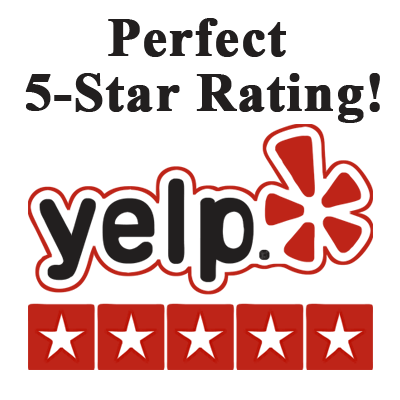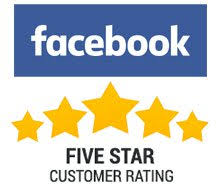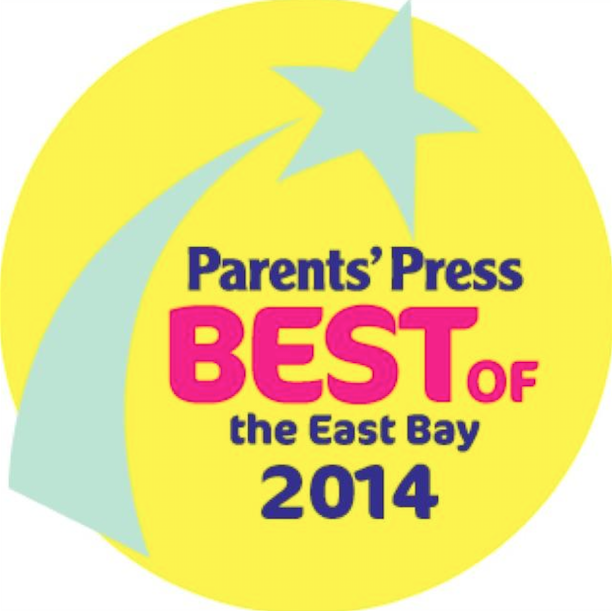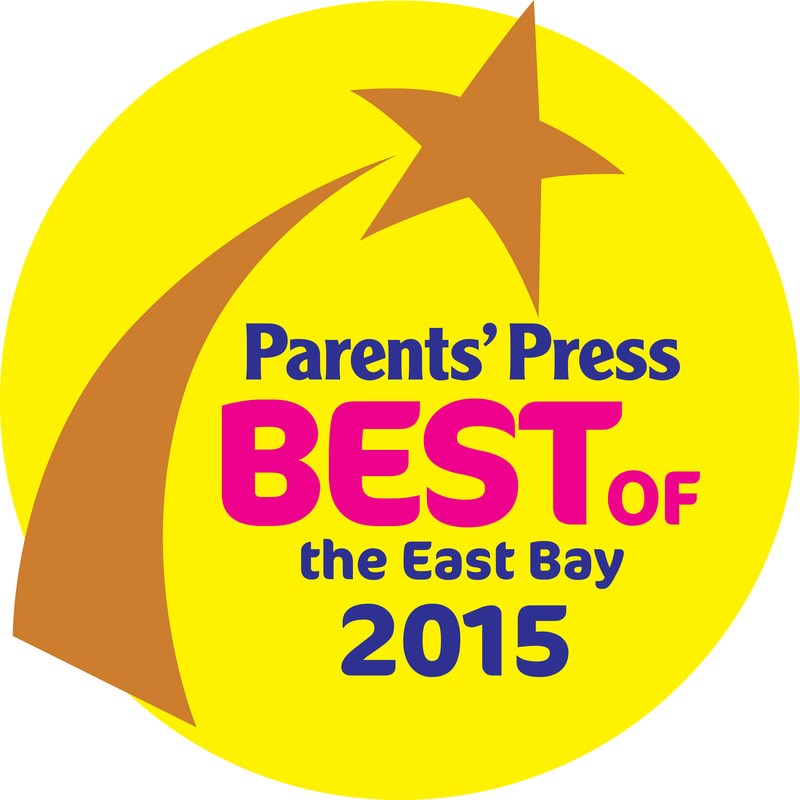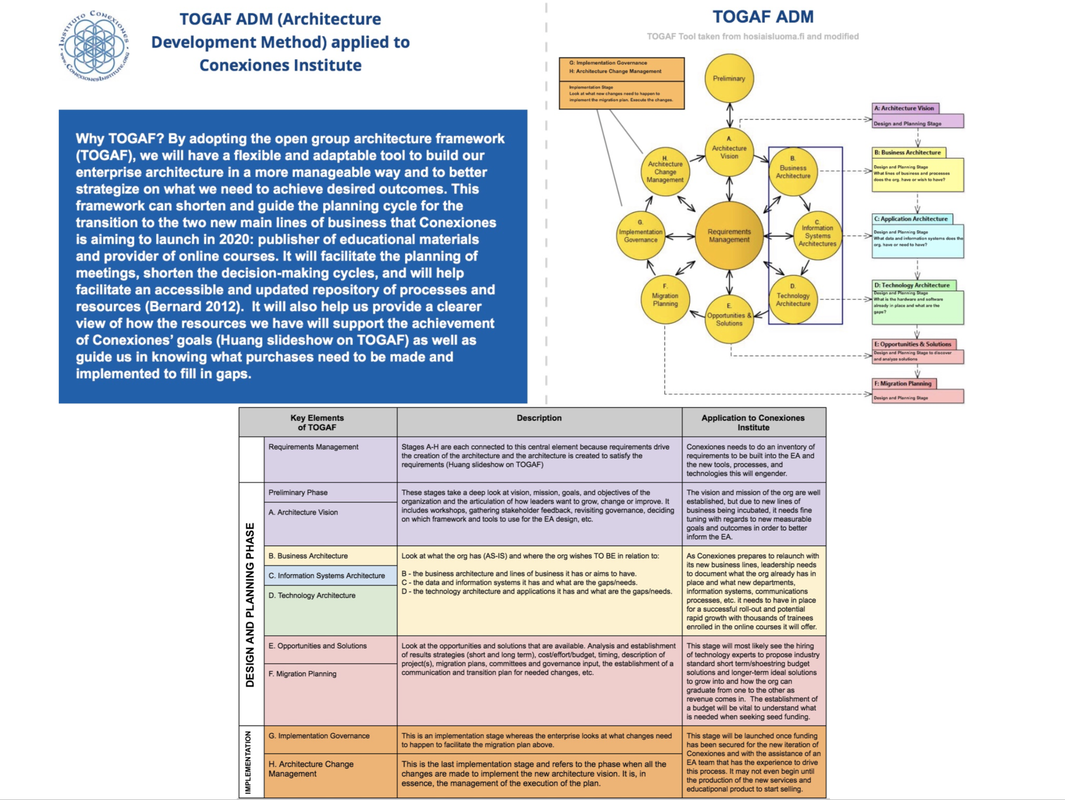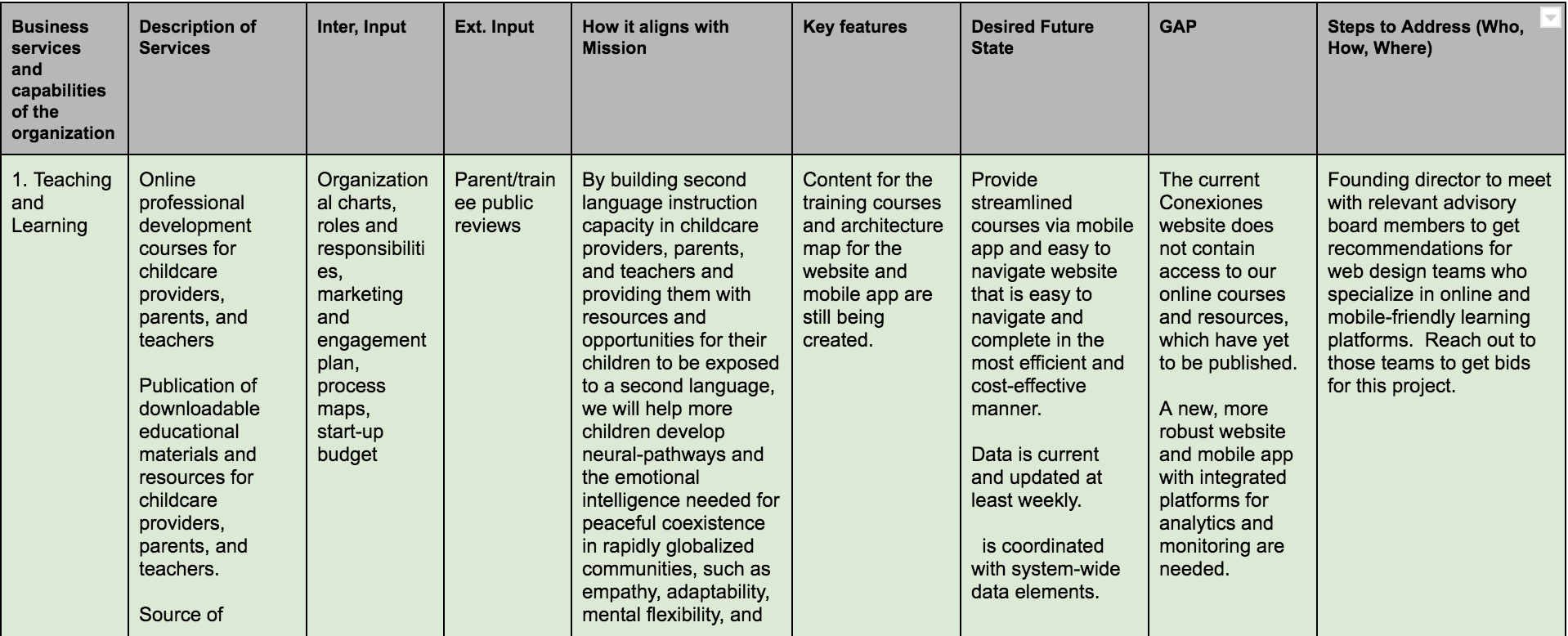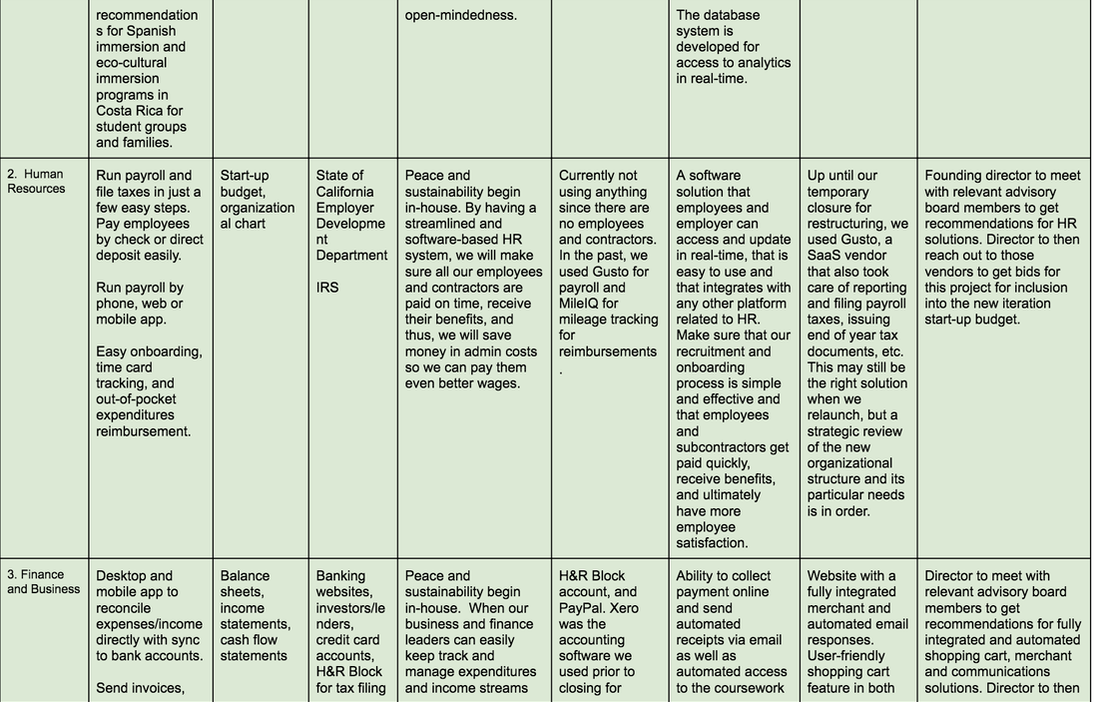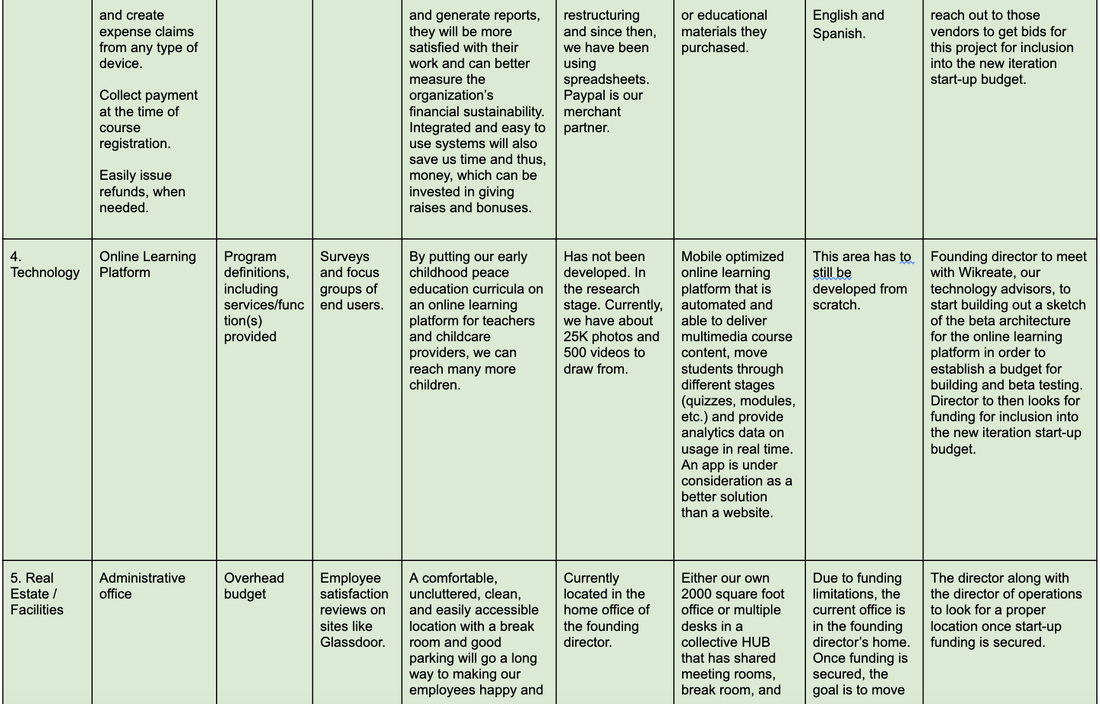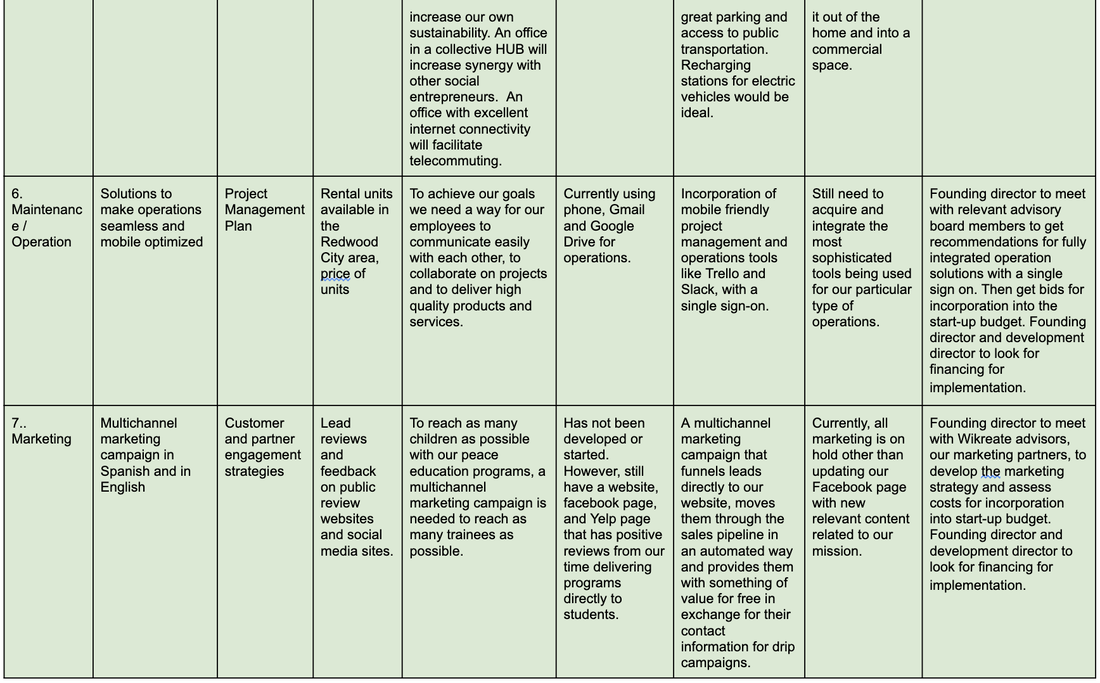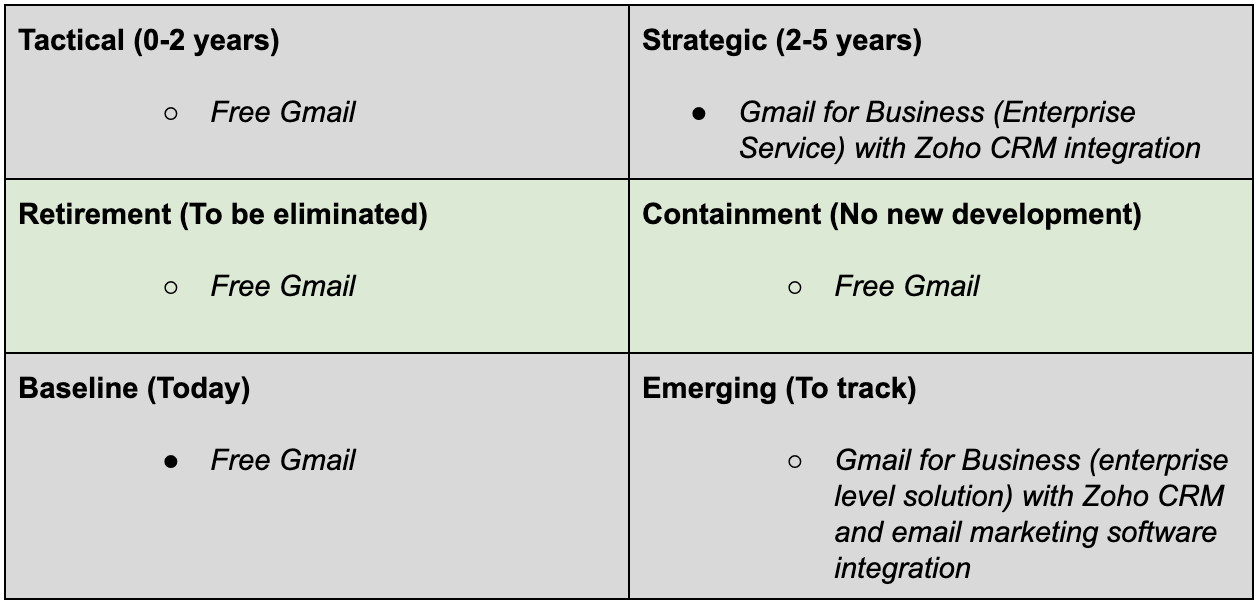Conexiones Institute's Enterprise Architecture Plan
Intro to Conexiones Institute and Why an EA Plan Now?
Conexiones Institute is a social enterprise which has been dedicated, since 2001, to advancing a more joyful, peaceful, and sustainable globalization process for ALL. It does so by producing peace education experiences, programs, and publications that connect babies, children, youth, and families to nature, cultural diversity, the arts, and each other while nurturing 21st-century skills such as multilingualism, creativity, non-violent communication, cross-cultural cooperation, media literacy, community awareness, and Earth stewardship. One of our first programs was the establishment of an eco-cultural camp and rainforest park in a remote Costa Rican rainforest community (2005). Furthermore, from 2008-2016, we produced award-winning Spanish classes and day and summer camps for San Francisco Bay Area children (ages 0-13). Some of these programs, such as AVENTURAS day camp and Spanish through the Arts classes were in high demand, and received awards and high reviews from participants. This constant demand for growth came with increasing growing pains related to scaling sustainably.
During our most productive peak period of 2013-2016, we were producing an average of 25 classes or camps per week at 8 different sites around the Bay Area, had a team of 11 educators and 6 support staff, and served an average of 200 students per year Right now, the camp in Costa Rica hosts approximately 6 volunteer student groups per year (about 120 visitors). However, the Costa Rica camp now operates as its own social enterprise, Three Seeds Eco-Education Camp, so technically, Conexiones has not been directly providing educational services to any students since going into hybernation in late 2016 to undergo a significant restructuring aimed at meeting the demand for our programs and classes in a sustainable and scalable way.
During our most productive peak period of 2013-2016, we were producing an average of 25 classes or camps per week at 8 different sites around the Bay Area, had a team of 11 educators and 6 support staff, and served an average of 200 students per year Right now, the camp in Costa Rica hosts approximately 6 volunteer student groups per year (about 120 visitors). However, the Costa Rica camp now operates as its own social enterprise, Three Seeds Eco-Education Camp, so technically, Conexiones has not been directly providing educational services to any students since going into hybernation in late 2016 to undergo a significant restructuring aimed at meeting the demand for our programs and classes in a sustainable and scalable way.
Key goals of this restructuring include making our programs more accessible and affordable so they can spread easily. When producing programs directly, we had a sliding scale, but it was limited to only 10% of our students because of the high costs of overhead expenses, such as those related to HR, liability, contracts, registration, and collection of payments. Schools and PTA's in lower income schools were often priced out as well. We also encountered logistical barriers due to geographical limitations. Thus, a decentralization and highly automated and scalable model became the obvious choice.
By removing ourselves as a "middle man," and offering childcare providers and educators a way to become licensed in our curricula through affordable online certification courses, all of the tuition or income they collect can go to their own coffers and none of it need be diverted to an overhead umbrella organization. As practitioners licensed to use our brand, they can also leverage our momentum, brand recognition, and collective resources. The models used by Montessori, Reggio Emilia, and Waldorf are some variations of decentralized approaches worth emulating. However, the Conexiones' approach to certification and licensing will be more affordable, flexible, and accessible than these since a big part of our target audience includes nannies and home day care providers, many of whom do not have high levels of education or large amounts of time and income for professional development. Having a large cross-section of practitioners using our curricula will help make sure that children of all different socio-economic and cultural groups are ultimately reached.
In addition, the Conexiones' approach is not meant to replace other methodologies or approaches, such as Montessori . Rather, it is designed to enhance with an intentional peace education lens. The Conexiones' curricula can blend with any setting and with most any pedagogy. For those who do not have a pedagogy or approach, it also provides a peace education approach that can be adapted to almost any setting - from homes, to camps, to parks, to classrooms. The ultimate goal is for hundreds of independent childcare providers, teachers, and parents to easily replicate our programs for their own children, students, and schools, and to reach at least 1,000 children in the first three years of launching (projected for 2021).
Kimberly Newton-Klootwyk, founding director, is the only active staff member left at the organization, working pro-bono during this incubation period. She is leading this restructuring with the help of a process she is following as part of a Master's in Educational Leadership program (SDSU) and the on-call assistance of supporters, partners, and alumni. For guidance, she is able to call on her SDSU instructors, the Conexiones advisory board (75+ members), an informal parent and alumni board (10+ members), and strategic partners, such as Wikreate, an international marketing and technology firm owned by one of the Conexiones Institute founding members. Upon securing a small business loan or other type of funding, the industry standard positions will be filled to provide for the full development and sustainability of an online-learning and publishing enterprise, reconstituted as a B-Corporation.
This restructuring hinges on creating a successful flagship product that can disseminate easily and have a high enough ROI to develop and release new products over time. It is imperative that the organization have the appropriate enterprise architecture (EA) in place to launch, maintain, evaluate, and expand our new operations globally and regionally.
By removing ourselves as a "middle man," and offering childcare providers and educators a way to become licensed in our curricula through affordable online certification courses, all of the tuition or income they collect can go to their own coffers and none of it need be diverted to an overhead umbrella organization. As practitioners licensed to use our brand, they can also leverage our momentum, brand recognition, and collective resources. The models used by Montessori, Reggio Emilia, and Waldorf are some variations of decentralized approaches worth emulating. However, the Conexiones' approach to certification and licensing will be more affordable, flexible, and accessible than these since a big part of our target audience includes nannies and home day care providers, many of whom do not have high levels of education or large amounts of time and income for professional development. Having a large cross-section of practitioners using our curricula will help make sure that children of all different socio-economic and cultural groups are ultimately reached.
In addition, the Conexiones' approach is not meant to replace other methodologies or approaches, such as Montessori . Rather, it is designed to enhance with an intentional peace education lens. The Conexiones' curricula can blend with any setting and with most any pedagogy. For those who do not have a pedagogy or approach, it also provides a peace education approach that can be adapted to almost any setting - from homes, to camps, to parks, to classrooms. The ultimate goal is for hundreds of independent childcare providers, teachers, and parents to easily replicate our programs for their own children, students, and schools, and to reach at least 1,000 children in the first three years of launching (projected for 2021).
Kimberly Newton-Klootwyk, founding director, is the only active staff member left at the organization, working pro-bono during this incubation period. She is leading this restructuring with the help of a process she is following as part of a Master's in Educational Leadership program (SDSU) and the on-call assistance of supporters, partners, and alumni. For guidance, she is able to call on her SDSU instructors, the Conexiones advisory board (75+ members), an informal parent and alumni board (10+ members), and strategic partners, such as Wikreate, an international marketing and technology firm owned by one of the Conexiones Institute founding members. Upon securing a small business loan or other type of funding, the industry standard positions will be filled to provide for the full development and sustainability of an online-learning and publishing enterprise, reconstituted as a B-Corporation.
This restructuring hinges on creating a successful flagship product that can disseminate easily and have a high enough ROI to develop and release new products over time. It is imperative that the organization have the appropriate enterprise architecture (EA) in place to launch, maintain, evaluate, and expand our new operations globally and regionally.
The AVENTURAS curriculum and supporting resources combine to create the flagship product that has been chosen as the most strategic product to re-establish ourselves in the marketplace because it has been market-tested and piloted in various settings over eight years, has won multiple awards, has great public reviews, and is extremely versatile and easy to replicate. An mobile-optimized, self-paced, online training course in the AVENTURAS curriculum will train and license the next generation of independent childcare providers, teachers, and parents, and thus, we will advance our goal of scalability and providing peace education to a wide diversity of students beyond the San Francisco Bay Area. Along with this web-based course, we will publish on iBookstore and Amazon a robust collection of relevant educational resources and publications (i.e. interactive ebooks) that will support AVENTURAS practitioners, the students they serve, and the parents of those students.
The tuition and monthly membership fees along with sales of books and resources on iBookstore and Amazon will sustain the economic foundation needed to maintain ongoing operations, payment of start-up debt, and a cyclical development of more products, such as more ebooks and training courses in our other curricula - as well as translation and expansion of our approach into other languages beyond Spanish.
All of this requires a sophisticated and integrated enterprise architecture that will support the realization and measurement of our goals and interaction with each of the applications, companies, stakeholders, and funders that we will be interacting with.
Learn more about the AVENTURAS Curriculum Project by clicking here or watch this short video:
The tuition and monthly membership fees along with sales of books and resources on iBookstore and Amazon will sustain the economic foundation needed to maintain ongoing operations, payment of start-up debt, and a cyclical development of more products, such as more ebooks and training courses in our other curricula - as well as translation and expansion of our approach into other languages beyond Spanish.
All of this requires a sophisticated and integrated enterprise architecture that will support the realization and measurement of our goals and interaction with each of the applications, companies, stakeholders, and funders that we will be interacting with.
Learn more about the AVENTURAS Curriculum Project by clicking here or watch this short video:
-
INTRO TO EA
-
TOGAF MODEL
-
CURRENT STATE
-
GAP ANALYSIS: CURRENT AND FUTURE STATE
<
>
Overview of Enterprise Architecture
Enterprise architecture, or EA, is a strategic framework that can provide the structure, plan and processes to achieve an organization's vision and goals by aligning its business and program side with information technology (IT). Developing and implementing an EA blueprint—to integrate where the education agency is today, where it wants to be in the future and how it is going to achieve that future state. (Education Enterprise Architecture Guidebook)
The value of engaging in an enterprise architecture process for an educational organization like ours, which seeks to have a global and significant reach, include:
- Maximizing resources
- Maximizing expertise
- Preparedness for sustainability and scalability
- Sustaining needed changes
- Sustaining transitions and migrations
- Supporting students
- Supporting staff and contractors
- Easy access to data
- Easy creation of reports for internal and external stakeholders
- Avoiding loss of data
- Avoiding missed opportunities due to a rudimentary and ad-hoc IT system
- Avoid becoming obsolete due to outdated IT solutions
- More effective change management
- More planning for sustainability
- More efficient IT operations
- Better return on investment
- Faster, simpler and cheaper procurement
The value of engaging in an enterprise architecture process for an educational organization like ours, which seeks to have a global and significant reach, include:
- Maximizing resources
- Maximizing expertise
- Preparedness for sustainability and scalability
- Sustaining needed changes
- Sustaining transitions and migrations
- Supporting students
- Supporting staff and contractors
- Easy access to data
- Easy creation of reports for internal and external stakeholders
- Avoiding loss of data
- Avoiding missed opportunities due to a rudimentary and ad-hoc IT system
- Avoid becoming obsolete due to outdated IT solutions
- More effective change management
- More planning for sustainability
- More efficient IT operations
- Better return on investment
- Faster, simpler and cheaper procurement
Proper use of technology is a cornerstone, not only for effective and efficient administrative and communications practices, but also as an interwoven part of the Conexiones Institute pedagogy for both our professional development courses, and within the curriculum deployment itself for use by teachers directly with students. We see technology as a vital asset in assisting us in delivering our training courses in a scalable way and we see the children that our educational curricula serve as digital natives who are more easily engaged in our lesson plans through technological tools, such as using iPads for the creation of student-made ebooks and videos to practice their knowledge of Spanish and the concepts we teach. In short, successful integration of user-friendly technology will greatly enhance the learning of our adult and young students.
Conexiones Intitute's EA and Needs
|
There is currently a wonderful collection of experiences that have beeb built and been carried out safely for hundreds of students thanks to a slow organic growth and operating, essentially, as a sole-proprietor home-based business. No enterprise architecture is in place, other than what you see thought out in this presentation. Technology systems have been added ad-hoc, as needed, and while some have stayed throughout the years, others have been passing fancies that have gotten abandoned as quickly as they were tried out. No applications have been weighed against standards since the operations were small, local, and privately run with self-financing.
If we are to rebuild and relaunch Conexiones as a B-Corporation with multiple owners/investors and large scale partnerships, the rudimentary systems we have need to be refined and upgraded and brought into alignment with industry standards. We also need to identify and evaluate what platforms we are going to used to build out these new lines of business. Thus, until funding for start up development is secured to get paid experts involved, we will have to wait on a lot of this plan to be implemented. We do not want to implement too many solutions prematurely that are not the right long-term and global solutions. We aim to avoid having to go through a costly and destructive process of untangling and migrating data and losing precious resources in the process. |
Gap Analysis Between Current and Future State Business Services
As mentioned in the introduction to the rationalization for an enterprise architecture plan for Conexiones Institute above, we are currently in hibernation mode and restructuring from the ground up to relaunch as a different type of educational organization, building upon our past work and successful pilot programs. Thus, the transition to current and future state is quite dramatic in most lines of business.
-
PRELIMINARY PHASE
-
DATA STANDARDS
-
APPLICATIONS
-
TECH BRICKS
-
KEY FINDINGS
<
>
Preliminary Phase
At Conexiones Institute, the most important people for gathering the "where, what, why, who, and how" information of the enterprise in relation to Enterprise Architecture are Kimberly Newton-Klootwyk, Founding Director of the organization and a group of on-call advisors and mentors from our Board of Founding Members and our Advisory Board.
Where, What and Why?
Our founding members guide our thinking and strategy. We have a key strategic alliance with Elena Castanon and her international marketing and technology firm, Wikreate, which has been doing pro bono work for Conexiones for some time related to strategic development using new technological tools and platforms. The Wikreate team of web developers, app developers, and online communications and marketing experts are the ones we turn to for guidance on where to find the right team of experts and implement the most effective technological architecture to meet our goals of delivering our curricula and educational resources to thousands of childcare providers, parents, and teachers.
How?
Due to the research and development phase that we are in as we prepare to relaunch as an online educator training center and provider of educational resources, we have had some feedback groups in place, but nothing real formal. They are mostly slack and email conversations with various key people cced. We also have a private Facebook group where Conexiones founders, members, and board advisors can chime in and give advice, guidance, and connections to the project. As we build the budget and get funding, some of these individuals would come on board as paid consultants or employees and formal feedback loops would be established, including a pioneer beta testing group. The framework we have chosen during this preliminarily phase to guide our process is the TOGAF model, but this may change if our EA team decides that the Zachman or other type of framework is more appropriate.
|
Who?
In addition to our founding director working in close collaboration with Wikreate and our advisory board, once funding is secured we will hire a Enterprise Architecture Director with experience in online learning and publishing organizations to walk us through the process of creating and implementing our EA using industry standards. |
their field. One of them may end up being our technology coordinator. Stanford University has a program called BEAM (Bridging Education, Ambition, and Meaningful Work) for STEM-related disciplines, whereas they look for organizations and companies where Stanford students can get internships. I can access these students by connecting with BEAM through their Handshake online platform for job postings and going to their Venture job fairs to meet students.
Overview of Data Standards
Data standards are industry standards make it easier to create, share, and integrate data by making sure that there is a clear understanding of how the data are represented and that the data you receive are in a form that you expected. The International Standards Organization (ISO) defines a standard as “a document
that provides requirements, specifications, guidelines or characteristics that can be used consistently to
ensure that materials, products, processes and services are fit for their purpose.” Just like we have standards for measurement of time, distance, and size, we need to adopt a standard that is recognized by relevant stakeholders to measure organizational/student success.
The core elements of data standards include a common IT language to make communications standardized and understandable to outside stakeholders. Data standards also have a collection of tools and IT solutions that are integrated and can be added to our EA without having to build out custom API's.
There are three categories of education standards for Conexiones to consider:
1. Academic Standards - standards related to what our students should learn.
2. Data Standards - vocabulary and architecture for understanding and sharing data.
3. Technical Standards - protocols, methods, processes and practices that allow for seamless communication between applications, hardware and systems.
There are different types of data standards. Some examples include (Danielson, EDL 680):
Data standards are critical for educational organizations like Conexiones to employ because education centers, even if outside of the public education sphere, should be prepared to send understandable data to their stakeholders, such as funders or strategic partners, which, in the case of Conexiones, may include the Department of Education and Childcare Resource and Referral Agencies. If the data is not recognizable or readable by these partners, then our task of assuring student success (whether that be our adult students or the children they serve) will be more difficult. We need to track success and know what tools and resources would be the best to implement to improve student success. We want to also determine if investments we make, whether it be through our own funding mechanisms or through grants we receive, are actually helping students.
In anticipation for working closely with departments of education and government-funded programs such as Head Start, it would be very strategic for Conexiones to align its enterprise architecture with an industry-recognized data standard that can communicate with these institutions. We may consider adapting to the IMS Global Learning Consortium standards, if a better alternative is not found to be superior during our full analysis of options. Whatever standard we choose to go with, we would get a full list of their integrated applications, hardware, etc. for teaching, communications, production, marketing, delivery, and data analytics solutions. With that list in hand, we would hone in on only the applications that use those standards and thus, avoid having to have custom API's and integrations build for us.
By adopting an industry recognized standard, Conexiones will also benefit from the prior thinking that has already gone into analyzing and choosing the right solutions for the different working parts of an online learning organization and will lay the foundation for scalable global growth.
Watch the short video below to learn more about IMS Global Learning Consortium standards and why it may be the best fit for Conexiones Institute:
that provides requirements, specifications, guidelines or characteristics that can be used consistently to
ensure that materials, products, processes and services are fit for their purpose.” Just like we have standards for measurement of time, distance, and size, we need to adopt a standard that is recognized by relevant stakeholders to measure organizational/student success.
The core elements of data standards include a common IT language to make communications standardized and understandable to outside stakeholders. Data standards also have a collection of tools and IT solutions that are integrated and can be added to our EA without having to build out custom API's.
There are three categories of education standards for Conexiones to consider:
1. Academic Standards - standards related to what our students should learn.
2. Data Standards - vocabulary and architecture for understanding and sharing data.
3. Technical Standards - protocols, methods, processes and practices that allow for seamless communication between applications, hardware and systems.
There are different types of data standards. Some examples include (Danielson, EDL 680):
- Common Education Data Standards https://ceds.ed.gov
- P20W Education Standards Council (PESC) http://www.pesc.org
- Assessment Interoperability Framework (AIF) https://ceds.ed.gov/aif.aspx
- Open Badges Infrastructure (OBI) http://openbadges.org
- Academic Benchmarks http://academicbenchmarks.com
- Granular Identifiers and Metadata (GIM) for the Common Core State Standards Project http://www.setda.org/web/guest/Interoperability
- IMS Global Learning Consortium (GLC) http://imsglobal.org
Data standards are critical for educational organizations like Conexiones to employ because education centers, even if outside of the public education sphere, should be prepared to send understandable data to their stakeholders, such as funders or strategic partners, which, in the case of Conexiones, may include the Department of Education and Childcare Resource and Referral Agencies. If the data is not recognizable or readable by these partners, then our task of assuring student success (whether that be our adult students or the children they serve) will be more difficult. We need to track success and know what tools and resources would be the best to implement to improve student success. We want to also determine if investments we make, whether it be through our own funding mechanisms or through grants we receive, are actually helping students.
In anticipation for working closely with departments of education and government-funded programs such as Head Start, it would be very strategic for Conexiones to align its enterprise architecture with an industry-recognized data standard that can communicate with these institutions. We may consider adapting to the IMS Global Learning Consortium standards, if a better alternative is not found to be superior during our full analysis of options. Whatever standard we choose to go with, we would get a full list of their integrated applications, hardware, etc. for teaching, communications, production, marketing, delivery, and data analytics solutions. With that list in hand, we would hone in on only the applications that use those standards and thus, avoid having to have custom API's and integrations build for us.
By adopting an industry recognized standard, Conexiones will also benefit from the prior thinking that has already gone into analyzing and choosing the right solutions for the different working parts of an online learning organization and will lay the foundation for scalable global growth.
Watch the short video below to learn more about IMS Global Learning Consortium standards and why it may be the best fit for Conexiones Institute:
Application Rationalization Sample
A rationalization process needs to happen for every application currently being used by Conexiones and those that we seek to adopt. Here is an example of the analysis that will be undertaken for all of our current or formerly-used applications. We will need to make sure all applications conform to the API standards used by the standards we ultimately adopt.

Rationalization Notes:
Wordpress -
Although Wordpress is an industry standard for website building, it is unclear how it interacts and integrates with the IMS Global Learning Consortia partner platform. If it is a seamless integration, then this is the website building platform we would stay with because it is the preferred website builder of the web developers at Wikreate, the Conexiones partner for this project. Thus, we would keep this application for our website design. If it is not integrated, we would need to check with IMS and see what they have in their library of integrated tools and choose from their list of website builders.
iMovie -
This is a great program for creating sizzle reals and drafts of our videos and what we would like to see. It allows for members of our curriculum delivery development team to storyboard and draft out ideas in video format of our training modules and educational videos for children. However, it is not what professional film editors use. They prefer to use FinalCut Pro. Thus, upon securing funding to hire a team of film editors, we will transition to this application for the creation of the final polished professional videos.
ConstantContact -
ConstantContact is great for autoresponders to forms filled out on our website as well as for registration forms and drip campaigns. However, it has quite a few limitations, mainly that it requires a manual export of a CSV file to then enter this information into our CRM (Zoho) or our rosters. It also does not allow for customized on-screen messages so when a prospective student fills out a form, they get a generic response that makes them think they signed up for a newsletter. A different email marketing program will have to found. Again, I would start with looking at what hte IMS Global Learning Consortia partners offer or what integrates directly with Zoho CRM (i.e. Zoho Forms).
Wordpress -
Although Wordpress is an industry standard for website building, it is unclear how it interacts and integrates with the IMS Global Learning Consortia partner platform. If it is a seamless integration, then this is the website building platform we would stay with because it is the preferred website builder of the web developers at Wikreate, the Conexiones partner for this project. Thus, we would keep this application for our website design. If it is not integrated, we would need to check with IMS and see what they have in their library of integrated tools and choose from their list of website builders.
iMovie -
This is a great program for creating sizzle reals and drafts of our videos and what we would like to see. It allows for members of our curriculum delivery development team to storyboard and draft out ideas in video format of our training modules and educational videos for children. However, it is not what professional film editors use. They prefer to use FinalCut Pro. Thus, upon securing funding to hire a team of film editors, we will transition to this application for the creation of the final polished professional videos.
ConstantContact -
ConstantContact is great for autoresponders to forms filled out on our website as well as for registration forms and drip campaigns. However, it has quite a few limitations, mainly that it requires a manual export of a CSV file to then enter this information into our CRM (Zoho) or our rosters. It also does not allow for customized on-screen messages so when a prospective student fills out a form, they get a generic response that makes them think they signed up for a newsletter. A different email marketing program will have to found. Again, I would start with looking at what hte IMS Global Learning Consortia partners offer or what integrates directly with Zoho CRM (i.e. Zoho Forms).
Technology Bricks to Evaluate Current and Future States of Specific Applications
I found that building technology bricks for each application to be a great process and resource. It could be used for each of the applications (and hardware/networks) we currently use. By taking time to compare these to what other choices are available, we can make needed changes before relaunching the organization. It clarifies where we are, where we want to be, and what we should be looking at in the future.
Since we may want to go only with partners who integrate with the IMS Global Learning Consortia or whatever other standard we adopt, this process needs to be done with an eye on what solutions are available through them. I have determined that Google is one of the IMS Global Learning Consortia partners.
We plan to use technology bricks to analyze every technology component that we currently use in the organization. With the help of our trusted advisors and eventual paid contractors or staff, we will determine what needs to be phased out and what will better serve us in achieving our ideal future state.
Since we may want to go only with partners who integrate with the IMS Global Learning Consortia or whatever other standard we adopt, this process needs to be done with an eye on what solutions are available through them. I have determined that Google is one of the IMS Global Learning Consortia partners.
We plan to use technology bricks to analyze every technology component that we currently use in the organization. With the help of our trusted advisors and eventual paid contractors or staff, we will determine what needs to be phased out and what will better serve us in achieving our ideal future state.
EXAMPLE:
Brick Topic: Email Solution*
Description: Messaging client software includes applications that are accessible through web and mobile devices and have high-level of security and company domain email addresses. Enables peer-to-peer, asynchronous communications and offers lots of storage for a reasonable price.
*We looked more closely at our email solution as an example because it is one of the main applications we consistently use, even during this hibernation and incubation period of the organization. We like Gmail and its functionality and ease of use. It also has a lot of the components we would want, especially in relation to the integration with Zoho CRM, the CRM we currently use, and GoogleDrive. Since Zoho is also owned by Google, the integration is seamless with Gmail.
Final Reflection and 3 Key Findings
It is possible that twenty years ago an educational organization could have two distinct plans - an "education plan" and a separate "technology plan." However, today's increasingly digitized world and the prevalence of technological tools being used inside and outside the classroom must cause education organizations, even private ones like Conexiones, to reconsider this approach. Thus, Conexiones aims to develop its enterprise architecture and technology plan in direct conjunction its education plan in order to seamlessly align and take full advantage of the resources that technology can provide in delivering our curriculum to practitioners as well as how they deliver our programs to their students and communicate with the parents of their students. By developing these two plans together, essentially as one plan, we will seize on opportunities for optimization of the learning experience and the gathering and repairing of metrics and data around the learning process and our impact. By building out together, with plenty of stakeholder engagement and beta testing, we will more likely to reach our educational peace goals.
Furthermore, using a recognized enterprise architecture framework, like TOGAF, which is used by large organizations, we will go through the mechanisms that are tailored to be able to scale to as large of an organization as the demand for our products allows. Using a framework like TOGAF on a cyclical basis will also allow us to evaluate, alter and perfect the enterprise architecture over time.
A third key finding or consideration is that there are already industry standards in place that allow for the data we are producing and the applications that we are using to be able to integrate with the standards used by larger organizations that we will want to partner with, such as the departments of education, childcare resource and referral agencies, and programs like Head Start. This may also serve us in the future if we ever seek accreditation with strategic partners and institutions. Standards like the IMS Global Learning Consortium also have a suite of applications for educational organizations that already integrate seamlessly with each other, making the job of our technology team all that much easier since this would avoid the costly and tedious process of building custom API's and plug-ins.
Furthermore, using a recognized enterprise architecture framework, like TOGAF, which is used by large organizations, we will go through the mechanisms that are tailored to be able to scale to as large of an organization as the demand for our products allows. Using a framework like TOGAF on a cyclical basis will also allow us to evaluate, alter and perfect the enterprise architecture over time.
A third key finding or consideration is that there are already industry standards in place that allow for the data we are producing and the applications that we are using to be able to integrate with the standards used by larger organizations that we will want to partner with, such as the departments of education, childcare resource and referral agencies, and programs like Head Start. This may also serve us in the future if we ever seek accreditation with strategic partners and institutions. Standards like the IMS Global Learning Consortium also have a suite of applications for educational organizations that already integrate seamlessly with each other, making the job of our technology team all that much easier since this would avoid the costly and tedious process of building custom API's and plug-ins.
Photo used under Creative Commons from Mike J Maguire
